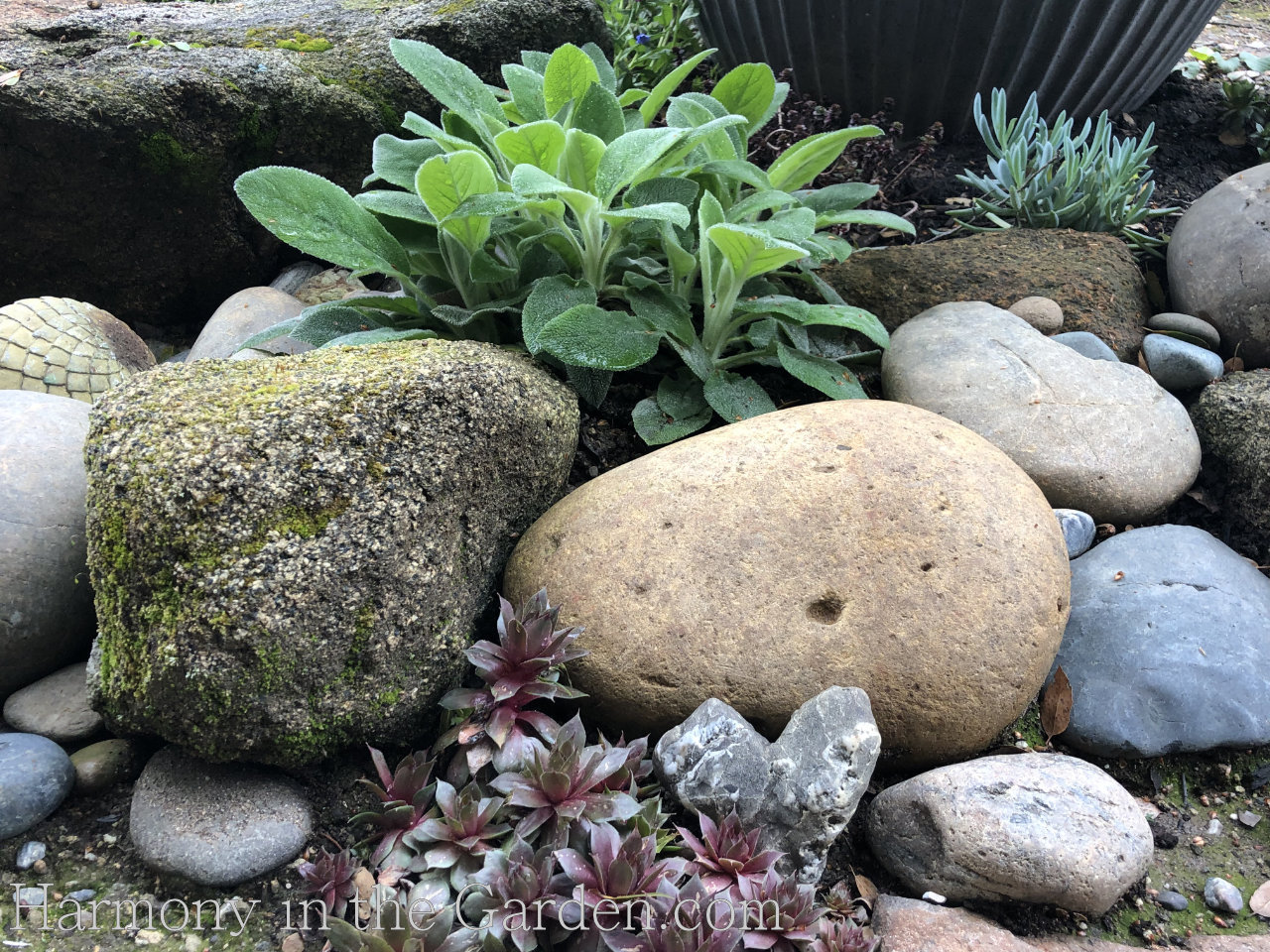
When designing gardens, I never forget to focus on what I call the 4 C’s: corners, cracks, crannies, and crevices.
When looking at a garden, my philosophy is this: any bare spot is a planting opportunity. And, I mean ANY bare spot. A little nook where two stones don’t quite meet up, or a gap in the pathway, a narrow corner – anything goes!
Give me a tiny patch of ground, and I’ll find a plant to fill it. The way I look at it is if I don’t fill it, mother nature will do it for me, and usually with something much less desirable.

It’s not only because, as a self-professed plantaholic I want to plant things everywhere, but I’ve also found that it’s sometimes the tiniest details in a garden that leave a lasting impression.
Sure, everyone notices the beautiful specimen tree in full bloom, or a climbing rose bursting with flowers.
But people also notice the tiny blooming viola discreetly tucked along the edge of a stepping stone or the draping succulents that seem to have planted themselves within a stone wall.

I’m not the only one who appreciates these tiny treasures, so when the folks at Fine Gardening Magazine asked me to be their guest on their ‘Let’s Argue About Plants’ podcast where ‘Nooks & Crannies Plants’ are featured. I jumped at the chance!
For those of you who aren’t familiar with this podcast, I highly recommend it.
It’s free, it’s funny, and it’s informative – and I listen to it all the time while walking my dog. By the time I get home from my walk, I’m excited to work in my garden!
You can find their podcast on iTunes, Stitcher, Spotify, etc. – click here to listen to this episode.
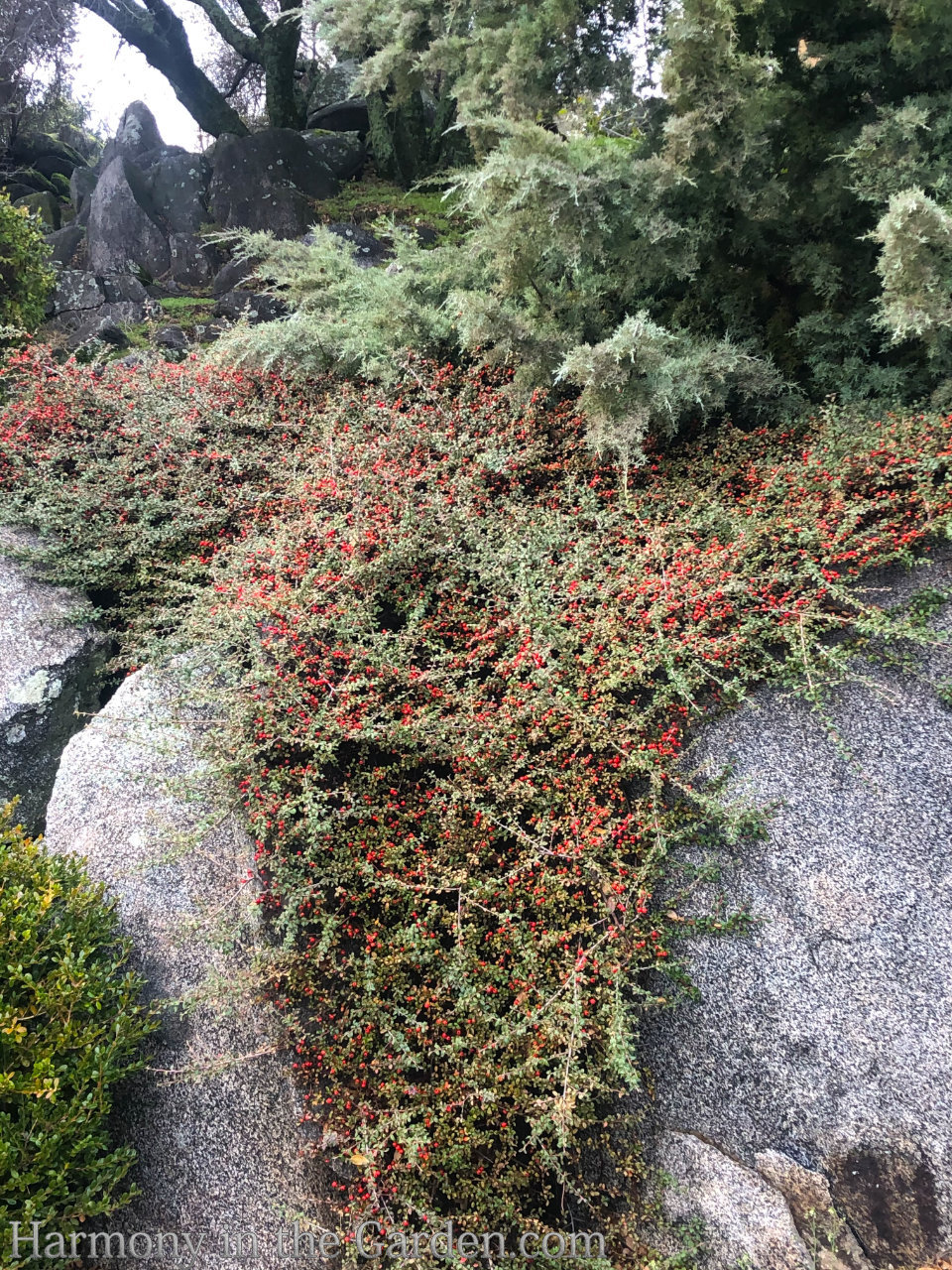
What the 4 C’s have in common is that the planting conditions are brutal.
There’s usually very little soil in the planting pocket, which means whatever soil is there will quickly dry out.
Also there’s very little room for a plant’s roots to roam, and the nearby stones (or other hardscaping) can intensify the heat or cold.
Therefore, the plants that can survive in such grim conditions as these have to be tough as nails, giving weeds a run for their money, and have shallow roots (perfect for shallow spaces.)
While overly rambunctious plants might not be welcome throughout the rest of your garden, they’re often the ones that can best survive in these challenging conditions.
Below are some of my favorites I’ve used in my own garden, gardens I’ve designed for others, and gardens I’ve visited around the country.
1. Succulents
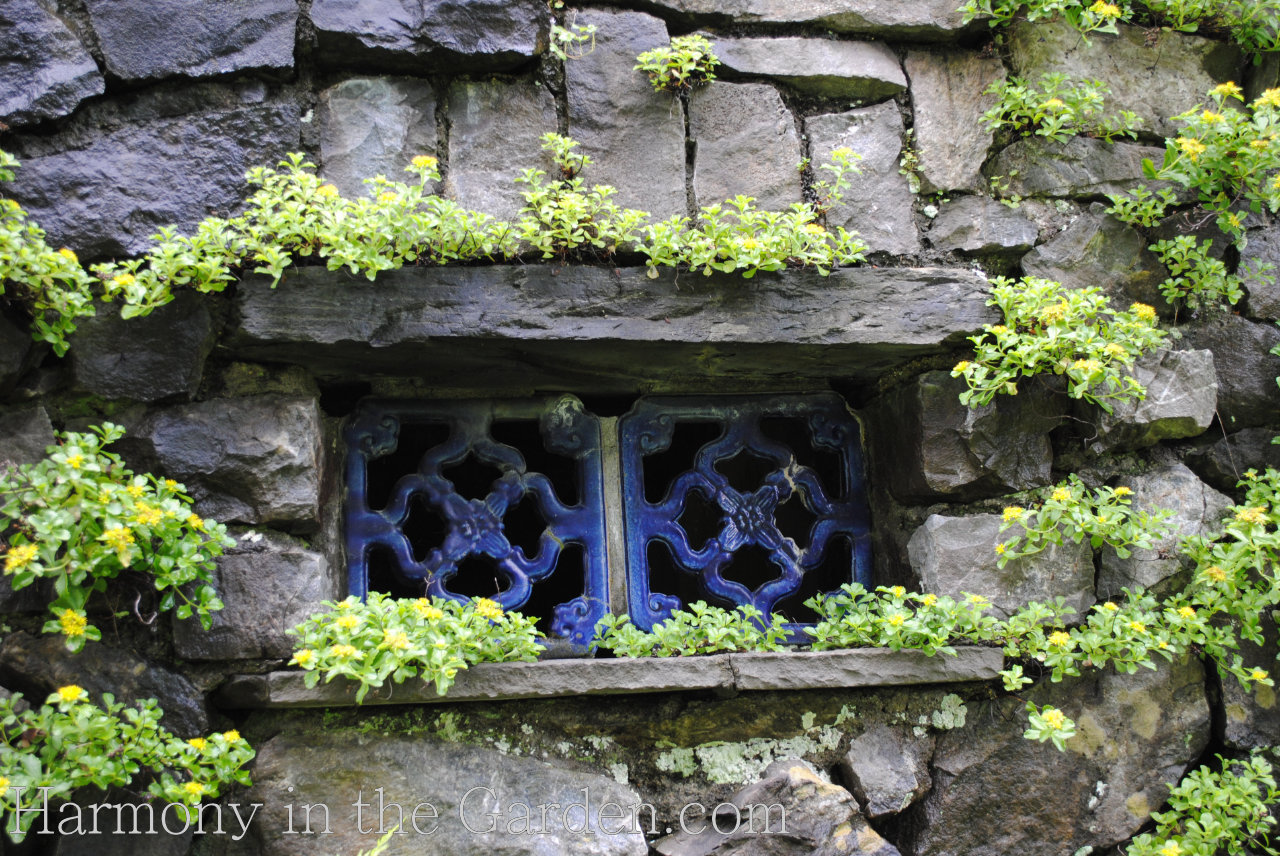
Succulents are among the best plants for tight spaces as they generally have shallow roots and thrive with little water.
Whenever I mention this, people automatically assume they’re only for warm-climate gardens.
Not true!!!
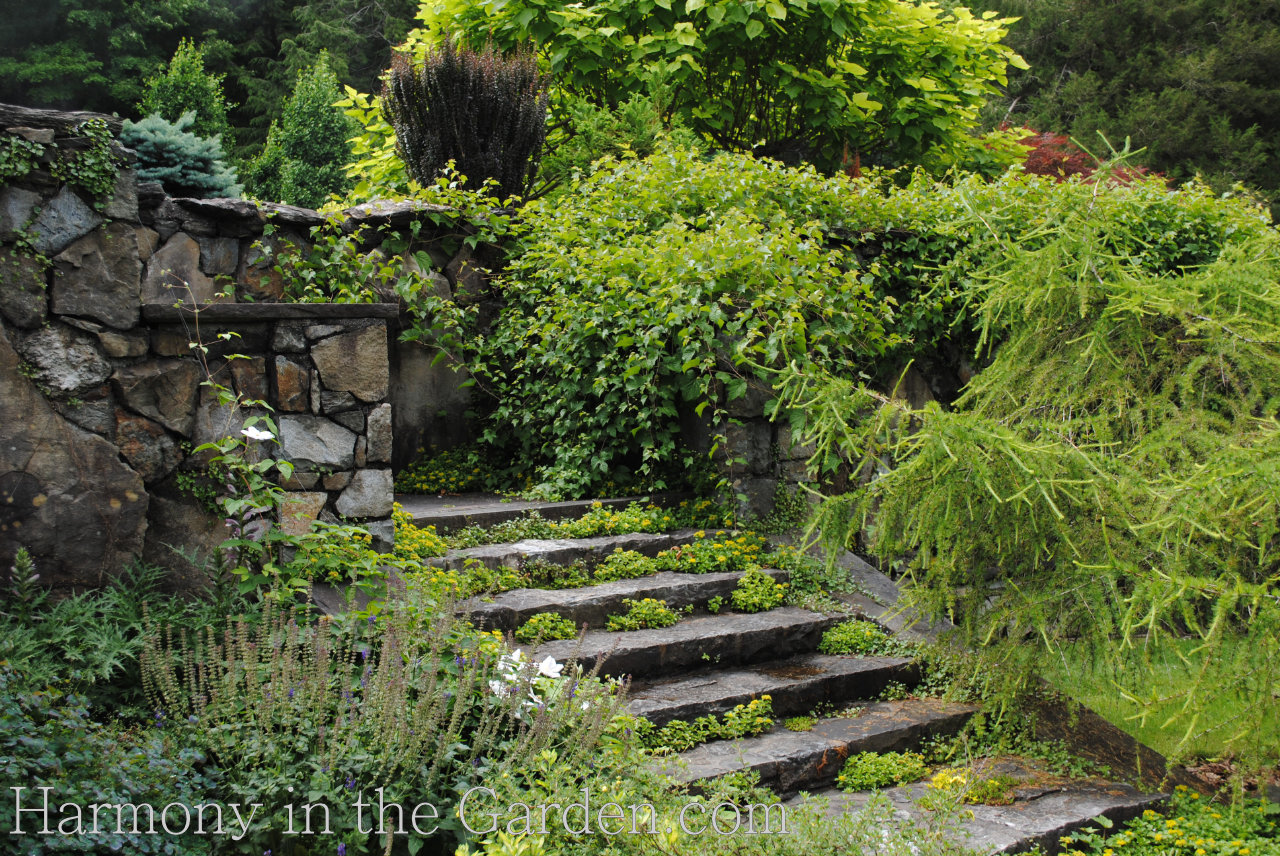
One of my favorite cold-hardy succulents is sedum kamtschaticum which is from Siberia. How’s that for cold-tolerant!
Hardy down to zone 3, I first saw this variety at Innisfree Garden, where you can see it scrambling around the blue tiles, above, over raised walls and around these stone steps.
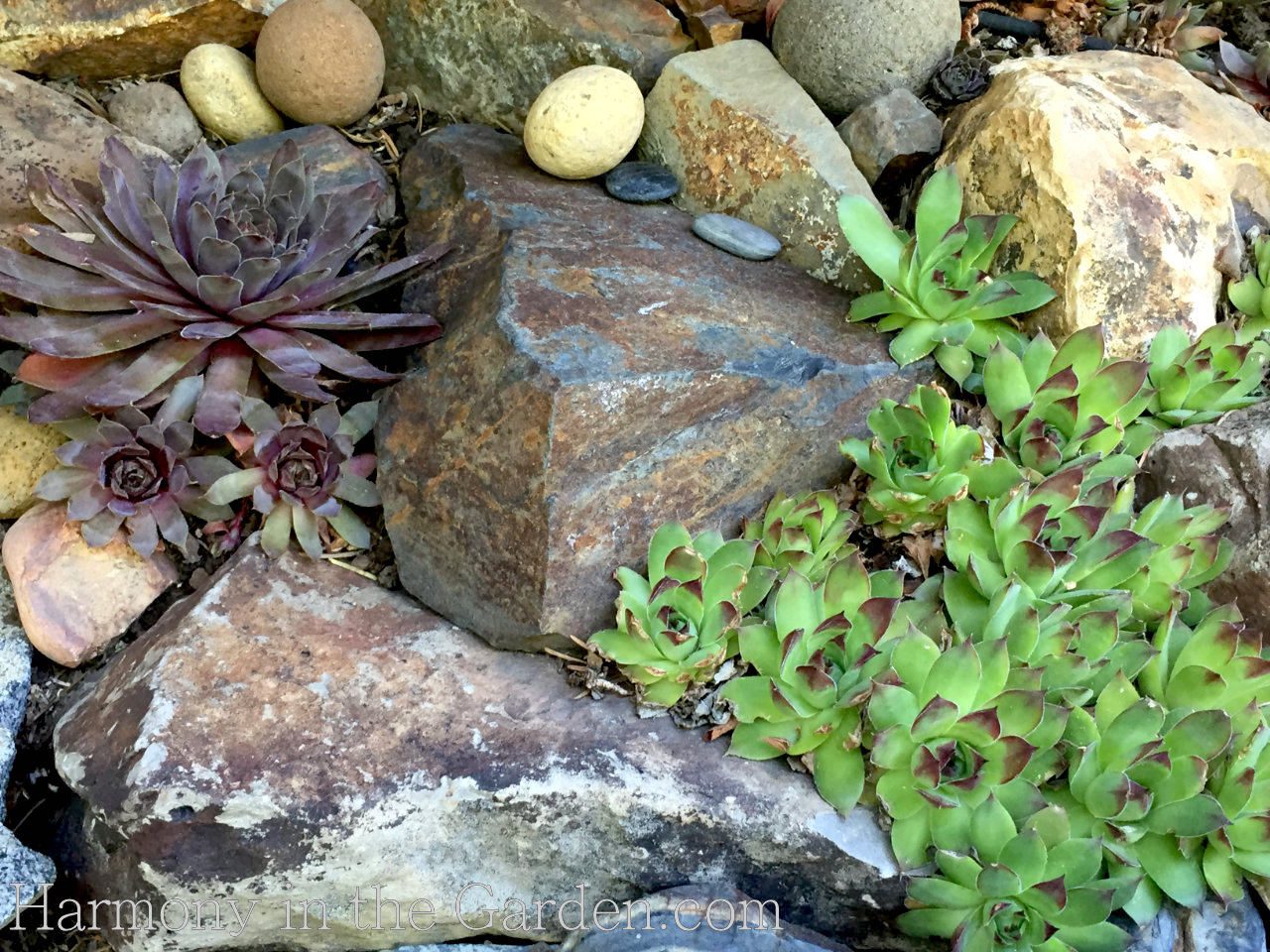
Another succulent that I have growing both in my garden and in my family’s zone-6 Lake Tahoe garden, is the sempervivum ‘Royal Ruby’ (zones 4-9.)
The other one is a mystery green sempervivum (which might be ‘Big Slipper,’ growing in zones 4-10) which is a favorite, adding a crisp, lush green color to the nearby stones.
For more information on cold hardy succulents, I highly recommend Hardy Succulents: Tough Plants for Every Climate

Hardy to zone 8b, the Pink Ice Plant (oscularia deltoides) is another low-growing succulent that I like to tuck into corners. Growing to 6-12”, it forms a lovely 3’ wide mat of geometric, angular foliage on pink-tinted stems.
And in the spring – look out! The stems harmonize beautifully with the profusion of pink star-like flowers.
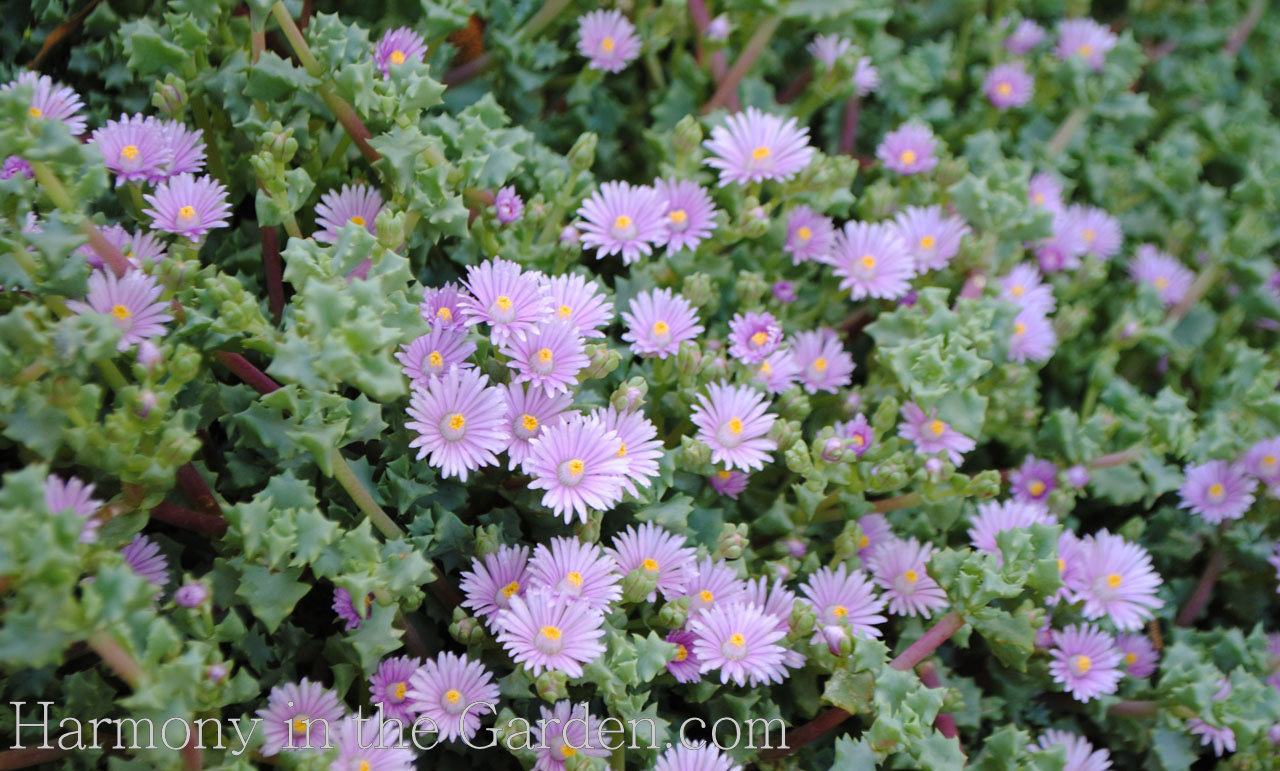
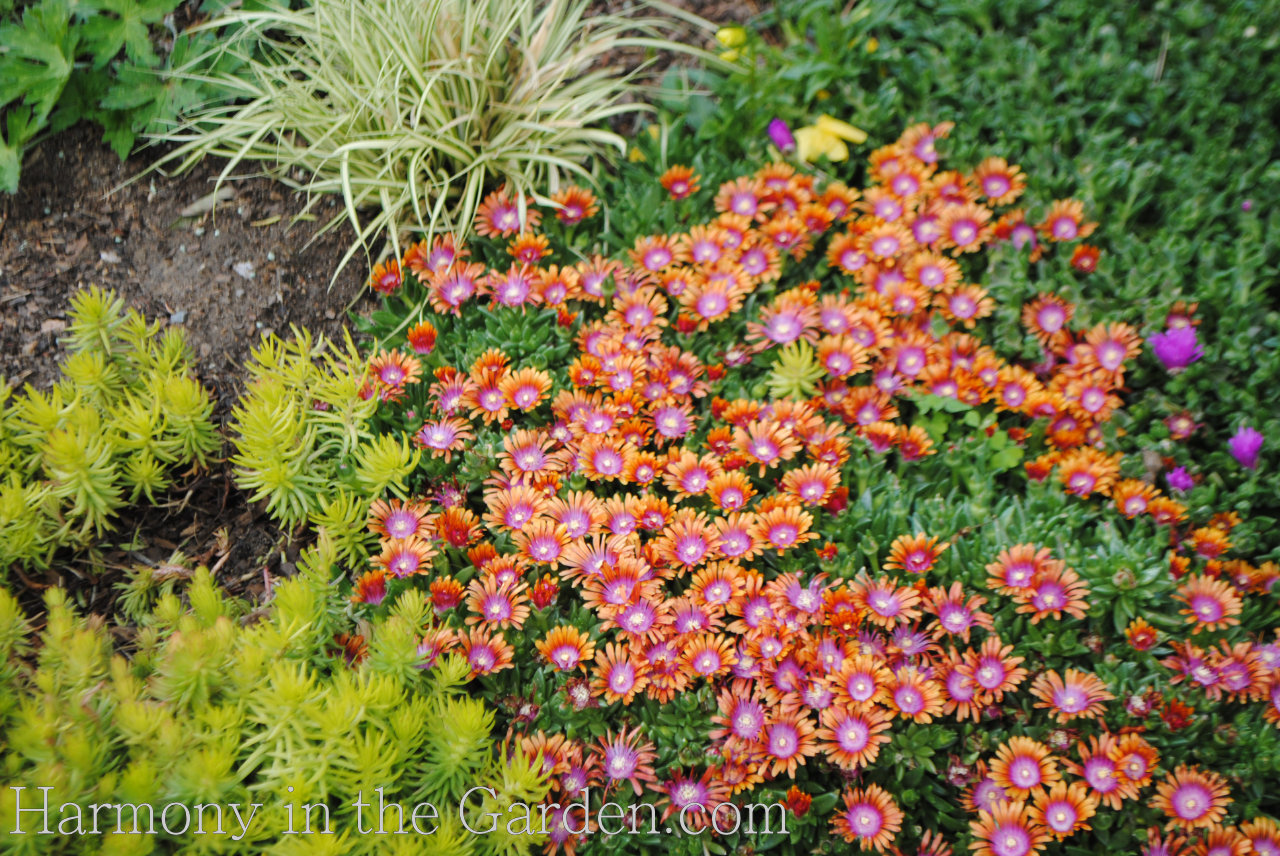
How’s this for an ice plant?
It’s a delosperma ‘Fire Spinner’ from Sheila Schultz’s jewel-box Denver garden (you can see more of her amazing plants for nooks & crannies here.)

Many of us are familiar with the Jellybean succulent (or ‘Pork ‘n Beans’, as I used to call them), but my very favorite variety is the sedum rubrotinctum ‘Aurora,’ with its pink tones.
‘Aurora’ thrives in warmer gardens in zones 9 and up.
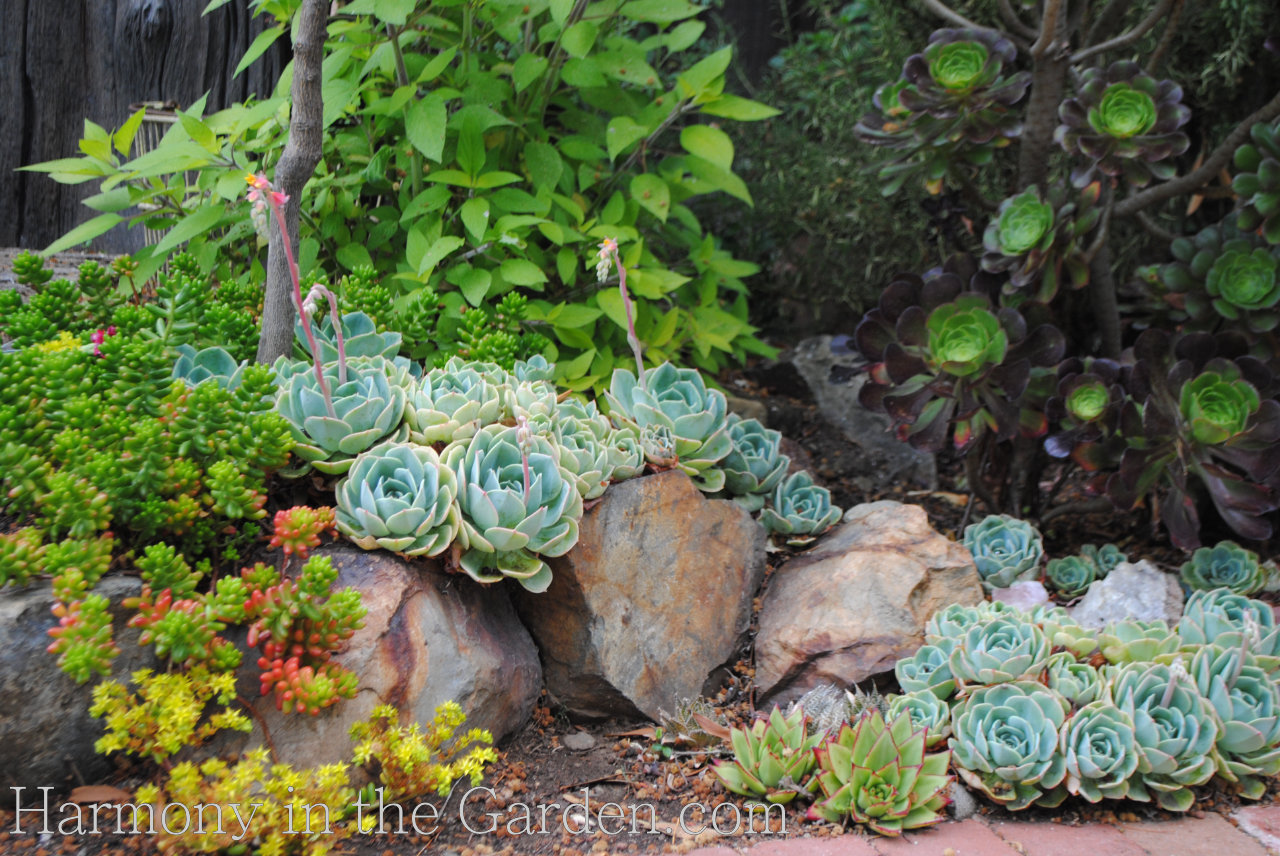
Here’s the more common green and red variety that I had growing in my previous garden.
I loved how it spilled over the raised bed, mingling with the nearby Hens ‘n Chicks (echeveria imbricata.)
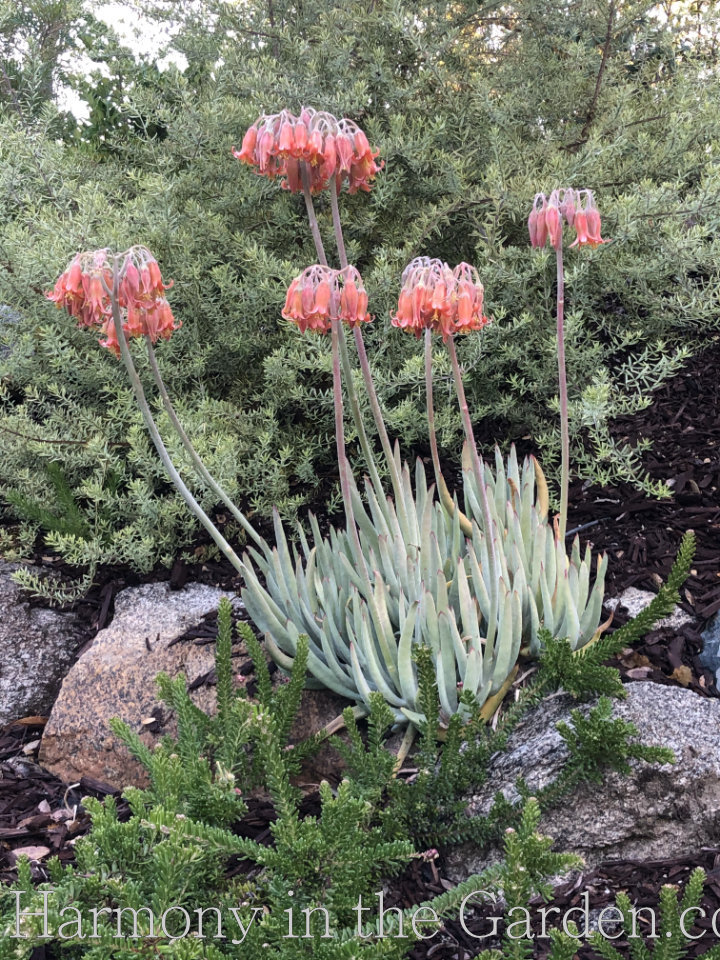
The Finger Aloe (cotyledon orbiculata ‘Flavida’) is a taller succulent that I like to use in nooks and crannies.
And when it blooms, it’s another 6” taller with hummingbird-magnet flowers lasting for several weeks.
Cotyledon ‘Burgundy Ice’ (below) has purple tinges, growing to the same size as the ‘Flavida,’ but seems to prefer a little more shade (at least in my hot garden.)

2. Teucrium varieties (aka: Germander)
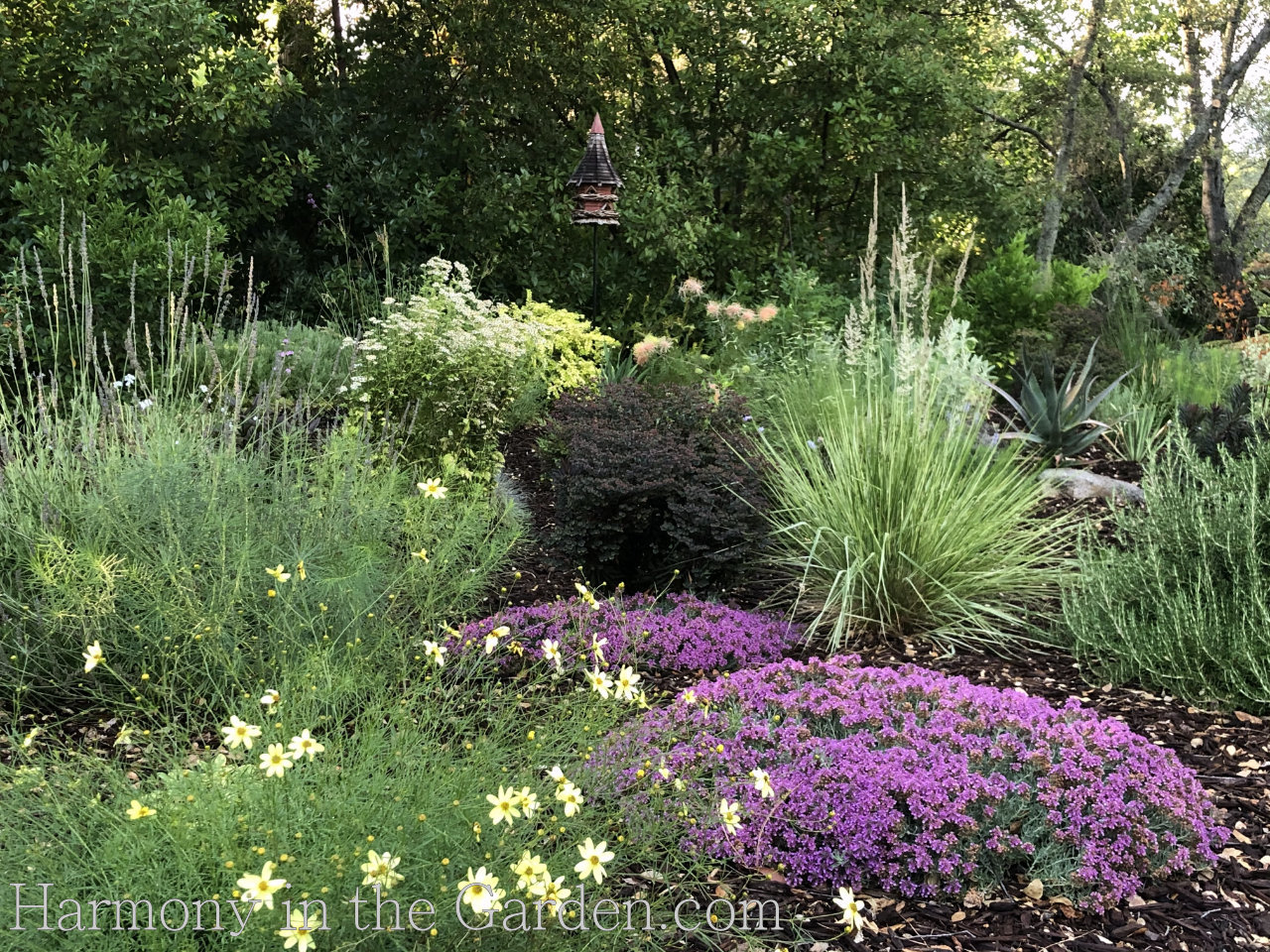
Teucrium is another genus of plants that I use extensively as one of The 4 C’s.
While they originate from the Mediterranean, some are hardy down to zone 6.
My favorite variety is called Fruity Germander (teucrium cossonii), from Majorca, Spain.
This tells you it wants to grow in hot, dry, rocky climates – perfect for the nooks and crannies of rock walls! Hardy in zones 6-9b, it forms a stunning ground cover, 3” x 3’.
In this photo (it’s the one covered with beautiful purple flowers) I have it growing as a ground cover. But just imagine it cascading over a wall, which I’ll hopefully have next year, as I just planted another one in a raised bed.
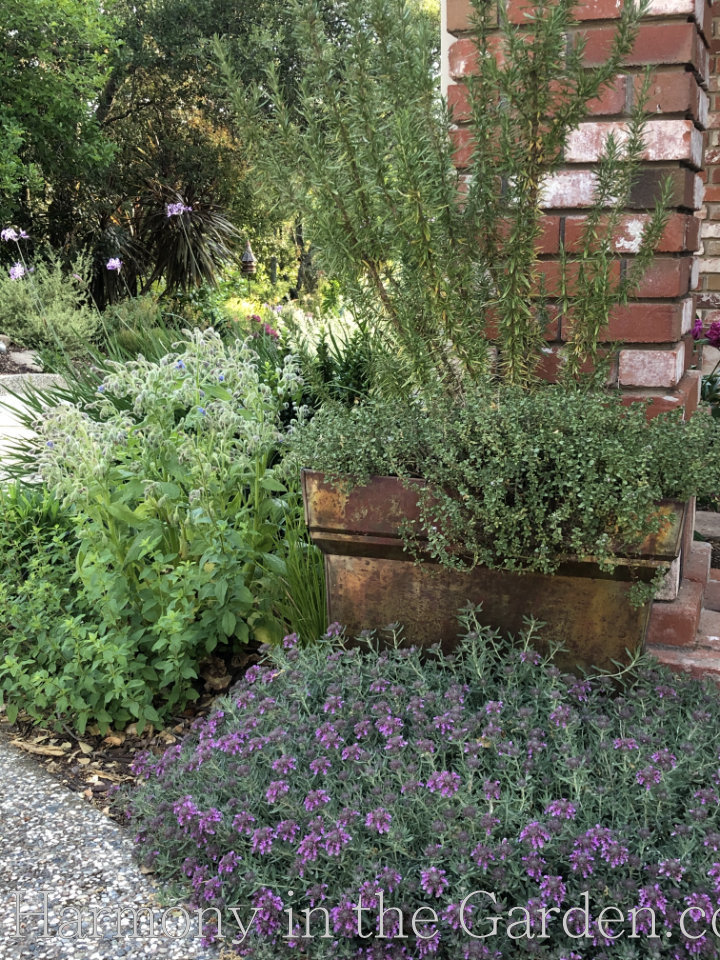
To my nose, however, there’s nothing ‘fruity’ about the scent.
If anything, it might smell a little musty, but that’s a small price to pay for its incredible weeks and weeks of bloom.
Mine blooms for about five weeks straight, then I just shear off the old blooms and get ready for another flush of rosy flowers a month or so later.
I plant this variety everywhere in my garden – wherever I have a little corner (like nestled at the edge of this container.)

The second type of teucrium I use is teucrium ackermanii (or Rock Germander.) It can be a little harder to find, but is SO worth the hunt. This variety grows in zones 6 to 9 and is similar to Fruity Germander, except it’s a little more cold hardy and only spreads to about 2’ wide.
Another difference is that its foliage is lighter in color, with really pretty light gray/silver tones (versus the darker gray-green colors of the other.) This variety also blooms heaviest in early spring, with only a few blooms later in the summer.
Here’s a tip: plant these two teucrium varieties near one another, and you’ll have a LOOOONG succession of blooms – with the Rock Germander blooming first in spring, then the Fruity Germander carrying it through the summer and fall.
3. Thyme

When planting in nooks and crannies, I prefer using a plant that’s at least 1 ½”-2” tall.
Even though I love the super low-growing ‘Elfin’ thyme (in the photo, here, with the purple flowers.)
I’ve found that weed seeds will freely lodge themselves within a mat of this variety, taking advantage of its low height (usually around 1-inch tall.)
This is a problem because the low height provides the perfect growing ground to germinate.

‘Elfin’ thyme is so low-growing that the protected weed seeds receive plenty of sunlight while waiting to sprout.
And before you know it, you’ll have oxalis (or another thug), taking over your nook & cranny.
The taller varieties of thyme (like the variegated thyme, left) don’t allow for as much sunlight to penetrate, making it a little less desirable for opportunistic weed seeds.
In this photo, I have sweet little crocus flowers popping up through the taller (4″ or so) ‘Lemon’ thyme.
4. Shade-loving plants

If you have some shadier spots in your garden, consider the Strawberry Begonia (Saxifraga stolonifera – zones 6-9.)
This plant appreciates a little more water, so I have mine growing along my dry-creek bed, which also happens to border the lawn.
With the lawn’s overspray, it’s as happy as can be, rewarding me in the spring with TONS of delicate, white, wispy flowers.
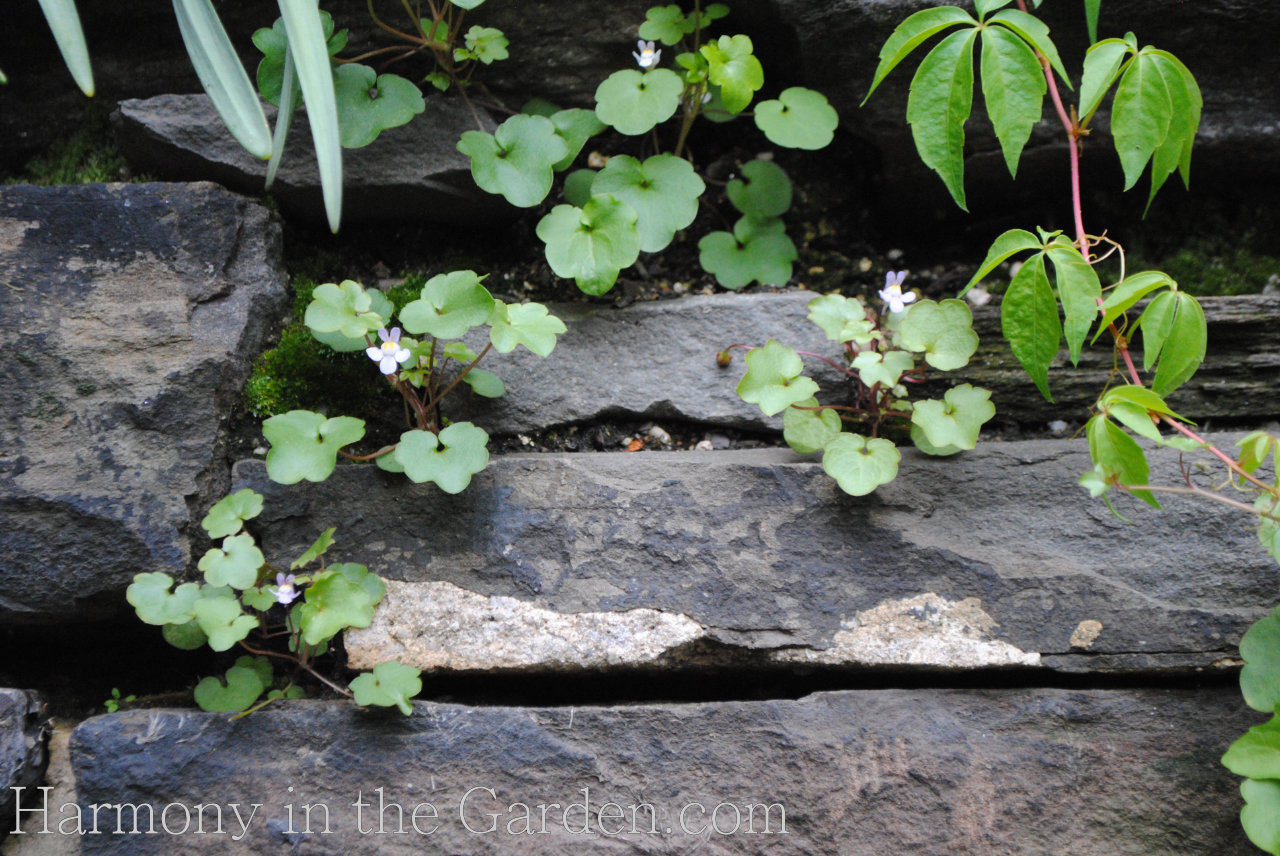
I saw this beautiful Kenilworth Ivy (cymbalaria muralis) growing in the stone walls of the Merchant Garden, in NYC.
It’s definitely rambunctious, but as I mentioned earlier, it’s that very feature that makes it ideal for re-seeding in a stone wall.
Unfortunately, though, it wouldn’t thrive in my hot zone-9 garden, so I’ll have to admire it from afar.

Ajuga is another rambunctious ground cover that does really well in tight, shady corners.
Sometimes too well!
In this example, I’ve planted ajuga as the lowest layer of the container.
I wanted to create a waterfall effect with the flowers, so I also planted it at the base of the container to look as if the purple spires are spilling over.
5. Not all plants for nooks & crannies need to be low-growing
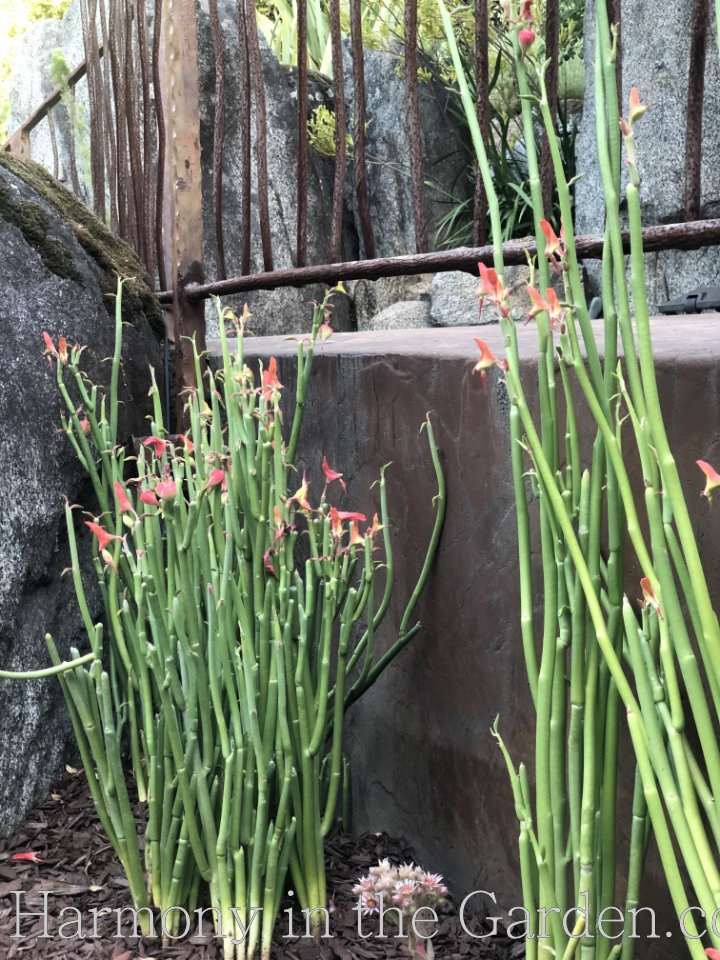
Sometimes you might have a tight corner, but the plant itself can grow quite tall.
This is the case in two areas of my garden. One is a corner between my kitchen bump-out window, and the other is a skinny garden bed near a pathway.
I chose the Slipper Plant (euphorbia lomelii) because I LOVE euphorbias,and because it’s my new favorite skinny-space plant.
It looks great every day of the year.
Blistering sun – no problem. Temps in the low 30’s – no problem. Little water – no problem.
It grows fairly quickly to 5’ tall x only 2’ wide, and should there be a straggler that hangs out onto the pathway, its effortless to remove.

My daughter asked why it’s called the Slipper Plant, so I picked a flower and turned it on its side.
Voila! A cute, little slipper!

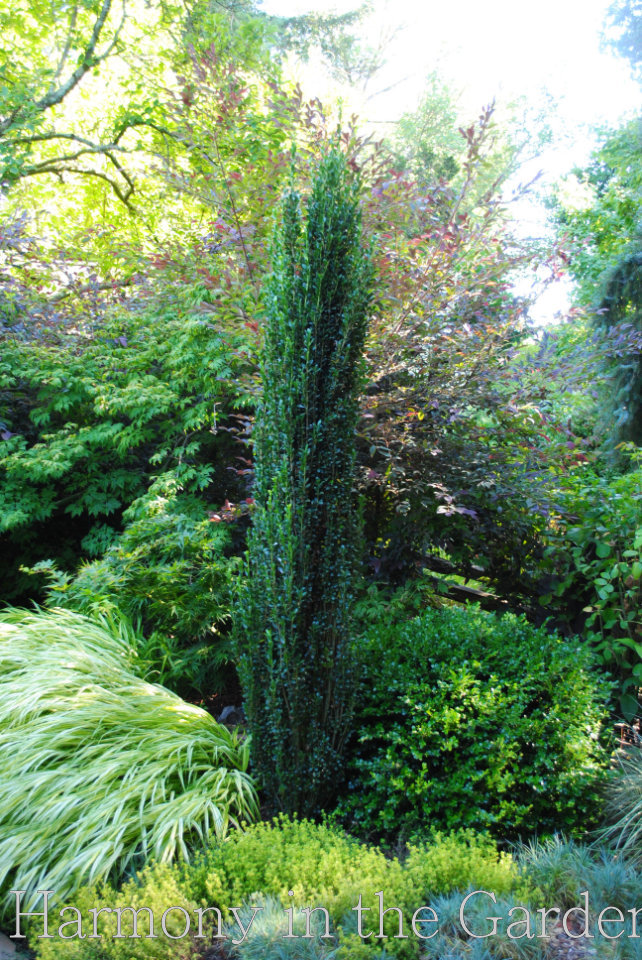
I also have the Sky Pencil Holly (ilex ‘Sky Pencil’) placed in another super tight spot where the plant can ultimately grow to 6’ high, yet remain a narrow 2’ wide.
This photo wasn’t taken in my garden (my holly is still a baby, and only 2’ tall) but lives in the stunning garden of Freeland & Sabrina Tanner.
It’s a slow-growing plant, so my advice is to buy the largest one you can find!

When designing gardens, I include planting pockets in unusual places whenever possible.
In this example, I’ve intentionally created deeper soil pockets between the steps to allow for succulents to be planted.

In this Laguna Beach garden, the succulents growing in the corners of the stairs didn’t just happen.
Soil pockets were explicitly created for this purpose before the cement was poured!

The succulents that are growing in between the stair treads of the Sherman Library Gardens are another example of intentionally created soil pockets.
Before I end this very lengthy post, I wanted to include a few more inspirational photos of plants that thrive in the skinniest of spaces. Enjoy!



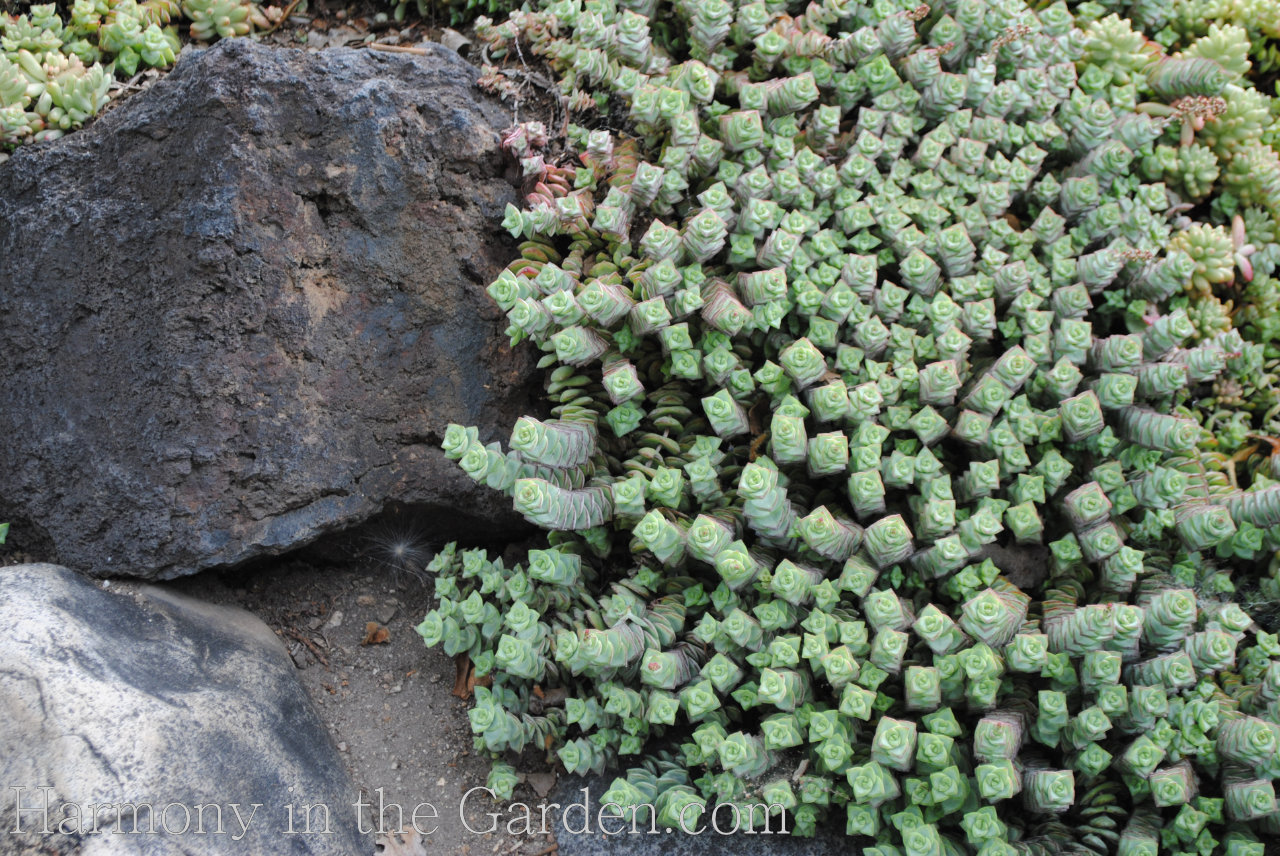



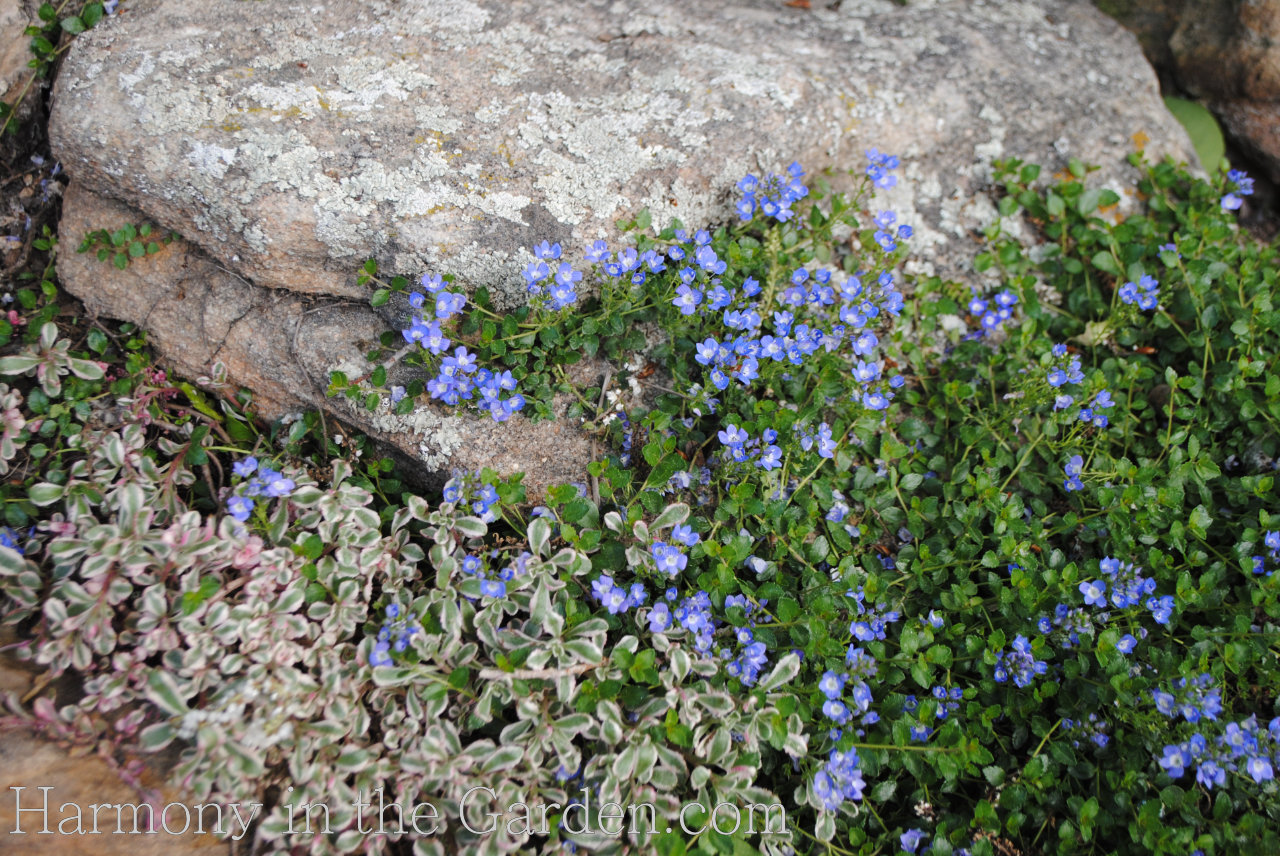
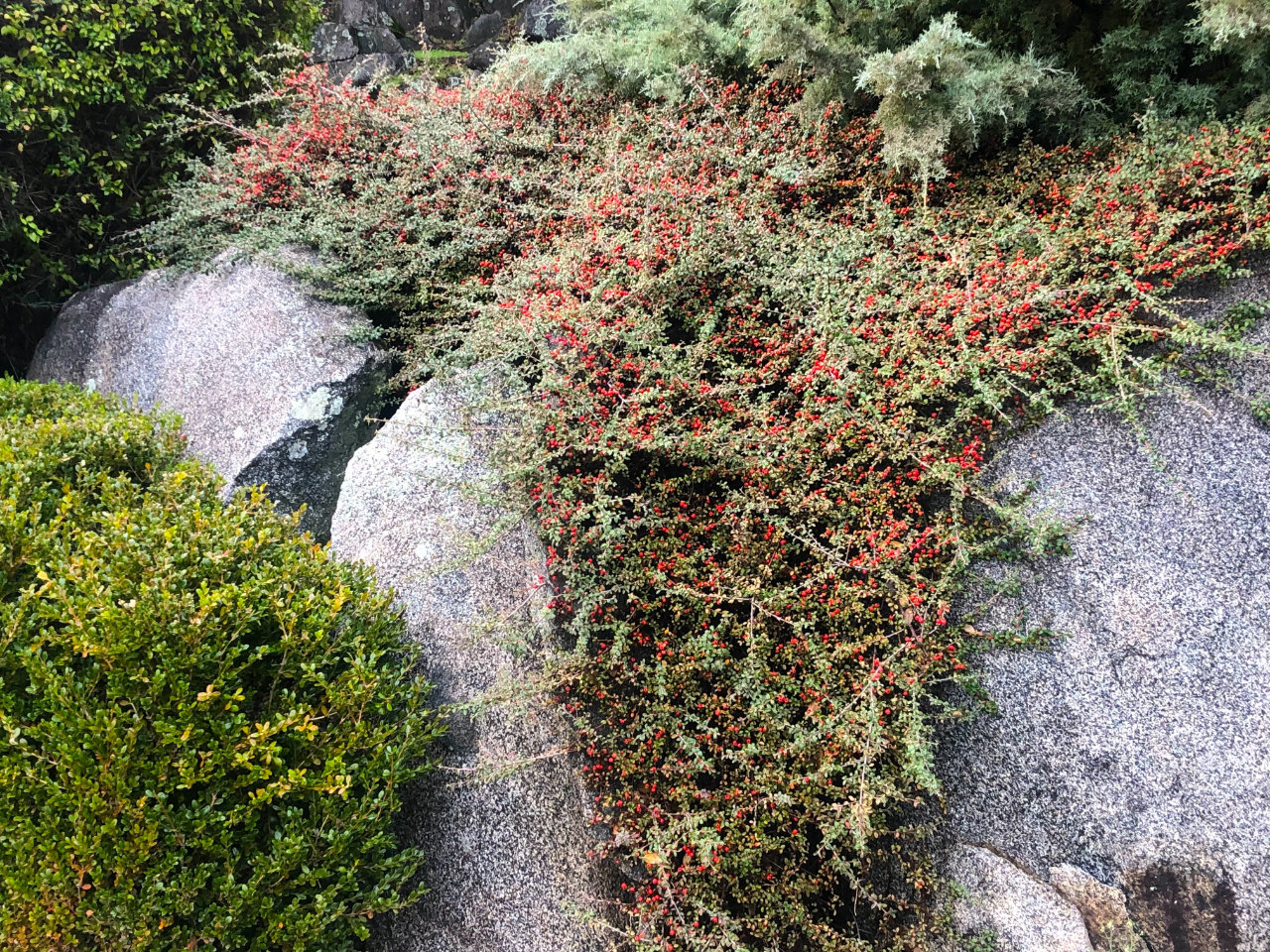
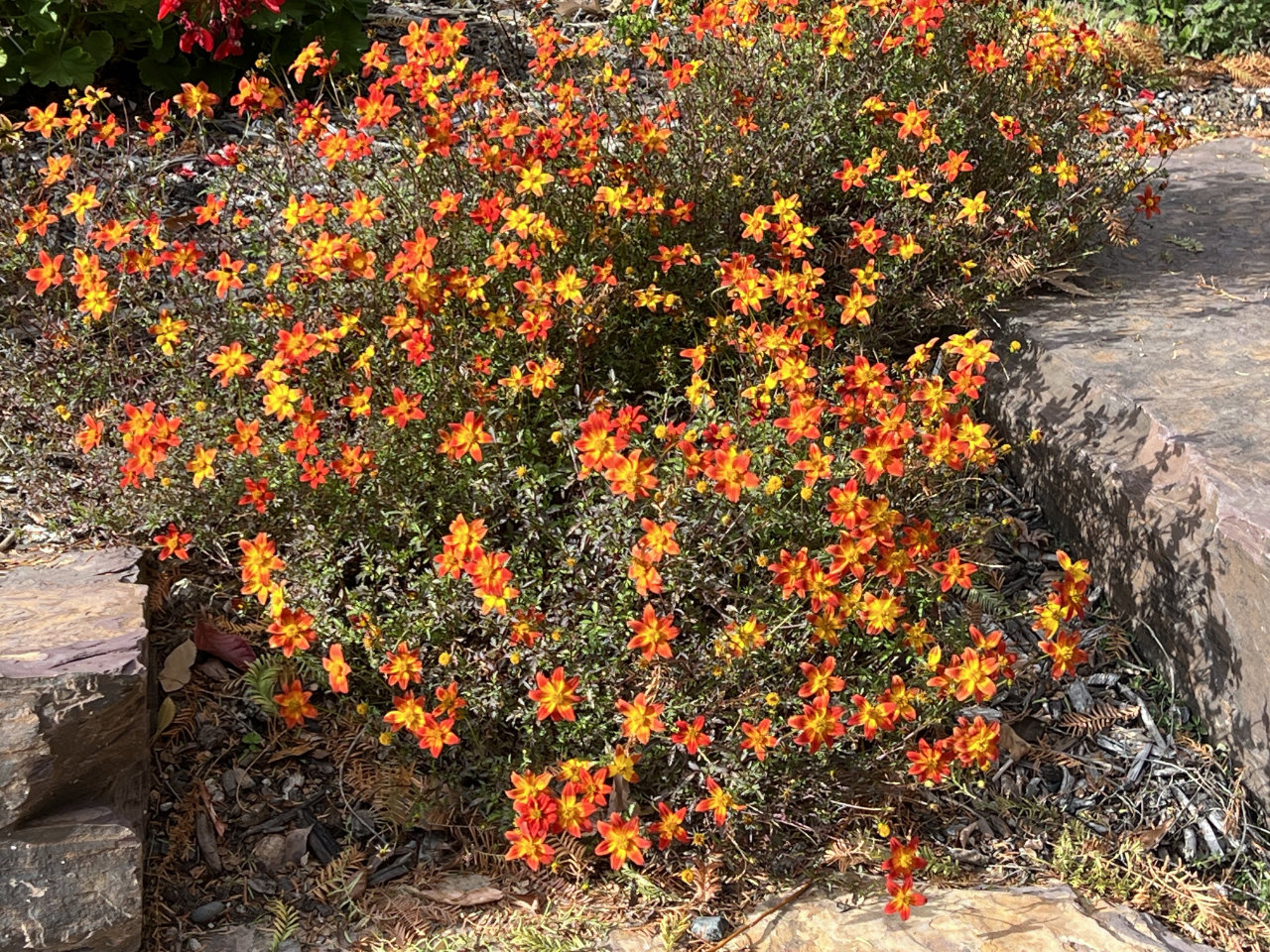
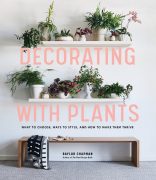




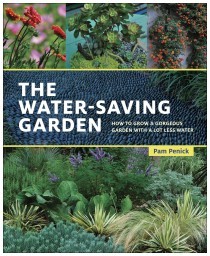
18 Comments
Hello I live in central Indiana sorry but I’m just learning zones and all about plants and flowers I am not sure what zone I am in. I just had a new sidewalk and walkway to my porch put in. What would u recommend I plant along both sides of walk where the contractors had the forms for the new walk? It’s now just a clumpy dry dirt no grass.
Hi Rebekah, welcome to the world of gardening! There’s so many variable to take into account when it comes to making suggestion (ie: amount of sun, water, soil conditions, nearby plants, winter temps, summer temps, deer/gophers/rabbits, etc.) On the homepage of my blog you’ll see a search bar on the far right side – you might type in a few key words to find articles which can help guide you. Off the top of my head, you might type in ‘hellstrips’, ‘grasses’, ‘drought-tolerant’, or ‘deer-resistant’ to start giving you inspiration and suggestions as to what would work in your zone. Since you’ll be seeing your walkway every day coming and going, you’ll want to plant things that look good for a long time, versus having a short bloom-time then it’s over, so mix in a few plants that are evergreen (keep their leaves year-round), perennials that bloom through different times of the year (spring, summer, and fall), sprinkle in a few bulbs, smaller grasses, etc. Have fun with it and I wish you the best of luck!
I have used 16″ pavers for my pathways in my garden. The grass has come up in the cracks in abundance. What do you recommend to plant in those cracks that can still be walked on? There isn’t a lot of traffic. mostly just me to harvest semi-raised beds. zone 7b east central Arkansas
Thank you!
Deb
Hi Deb, and welcome to my blog! First, I’d recommend to thoroughly remove the unwanted grass making sure to remove every last piece of root (if you leave any behind, chances are high the grass will quickly take over whatever you decide to plant there.) As to the ground cover, I’d recommend ‘Elfin Thyme’ (I wrote about it in my post) – it’s super low, lying flat to the ground with few flowers to attract bees that might sting your feet/ankles as you walk through. Depending on how mild your winters are, it’s evergreen, too. But even in our cold zone-6 garden it overwinters under 10-feet of snow, reliably returning each spring. Good luck!
Can you name each of the plants in the 10 photos at the end of the article please?
Hello, Philip – unfortunately I don’t know all the plants in the last photos but included them for a little visual inspiration. I’ll give it my best shot going in order from left to right: succulent (echeveria of some kind), creeping thyme with purple flowers, Santa Barbara Daisy (aka: fleabane) with white flowers, another succulent, lewisia (green clumps), Snow in Summer (white flowers, gray foliage), variegated iris, purple flowers not known, low growing cotoneaster shrub with red berries, orange flowers seem to be a bidens variety. I hope this helps a little!
How do you water your succulents?
Hi Patty – I use different methods depending on where they are. In the crevices between the steps, I often use a soaker hose (the case in the photo with the 2 types of succulents at Tahoe), or I’ll use a micro-sprayer (in the case of the succulents in the nooks of the stone steps.) I also have an area where I just hand-water them whenever I think about it, if it’s an area that’s too difficult to irrigate. Those succulents have to be super, super tough because my memory is getting worse by the day!
So needed! Am down hill from you in the hot Consumnes River valley. Very rocky, dry, soil this time of year, away from the river, so really appreciate this article!
I sure hope it helps, Ellison! If you can find the teucrium, you should definitely give it a try in your area. It hates wet feet, so it should really appreciate your dry, rocky soil!
Loved your this article.
Thank you, Carolyn, I’m glad you enjoyed it!
Thank you for the great photos and inspirational plants. I have a small garden at Tahoe and am amazed at the plants that return. I have lots of small succulents, and maybe I need a few more rocks and try some new varitiies.
Oh, that’s great, Susan – we’re neighbors! It’s SO HARD to garden up here, isn’t it? So anything that returns each year earns a spot in my garden. The succulents are fantastic, and even though Elfin thyme let the weed seeds in, it comes back year after year up here. We’ve had some growing between our flagstones for several years and every year it survives another freezing winter.
Great and informative article. The photo examples were pure perfection for the article content. I appreciate your blog greatly for its information and especially for your personal
attention. Keep it coming!! Thanks so much
Thank you SO much, Gay – what a compliment! Made my night. 🙂
An amazing article ….. makes me want to get out in my garden and start filling up little empty spaces.
Thank you….. again!!
Thanks so much, Gloria. If you can find that teucrium fruiticans I think you’ll just love it – perfect as a groundcover and for filling out tight spaces. Have fun gardening! 🙂